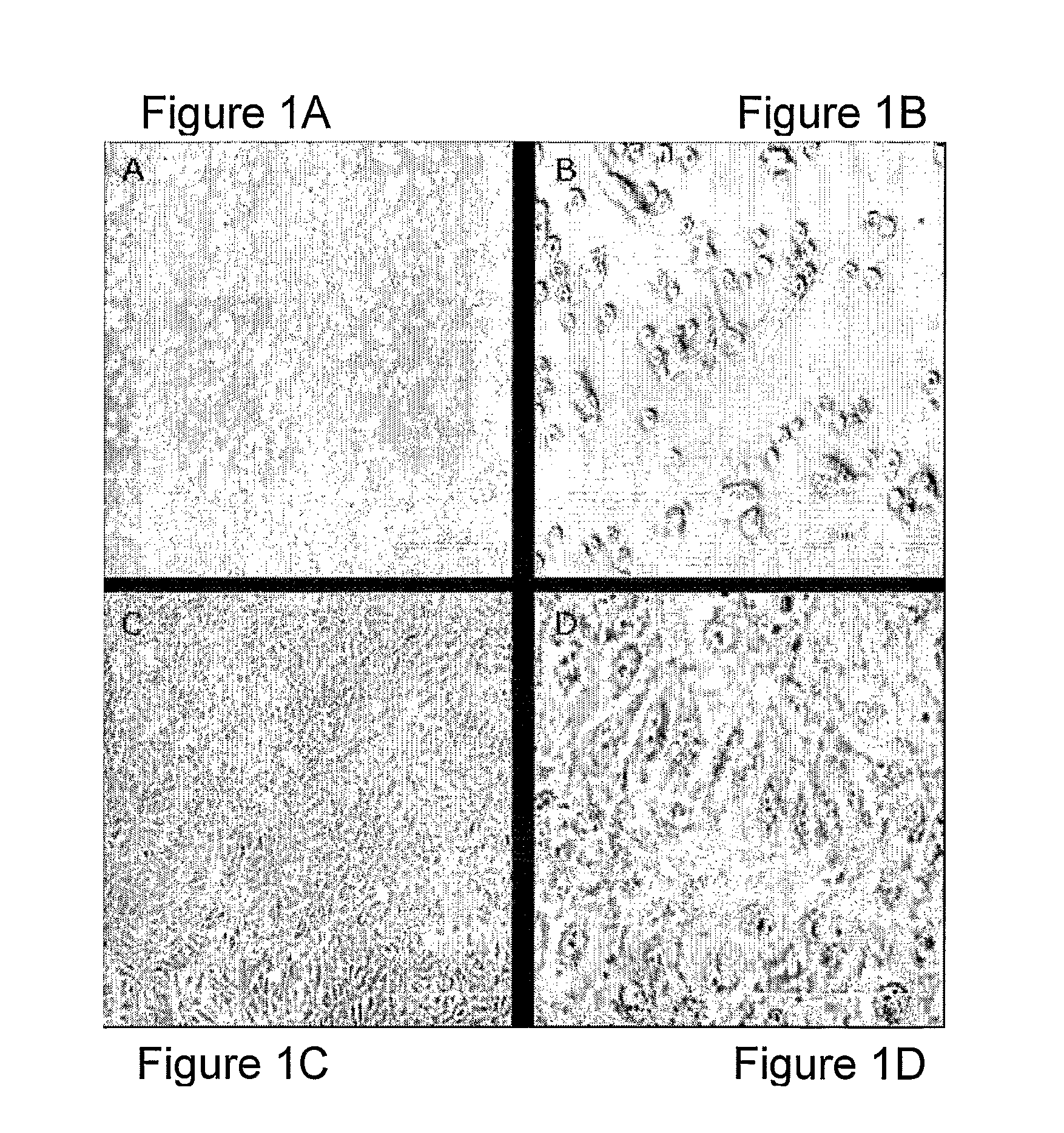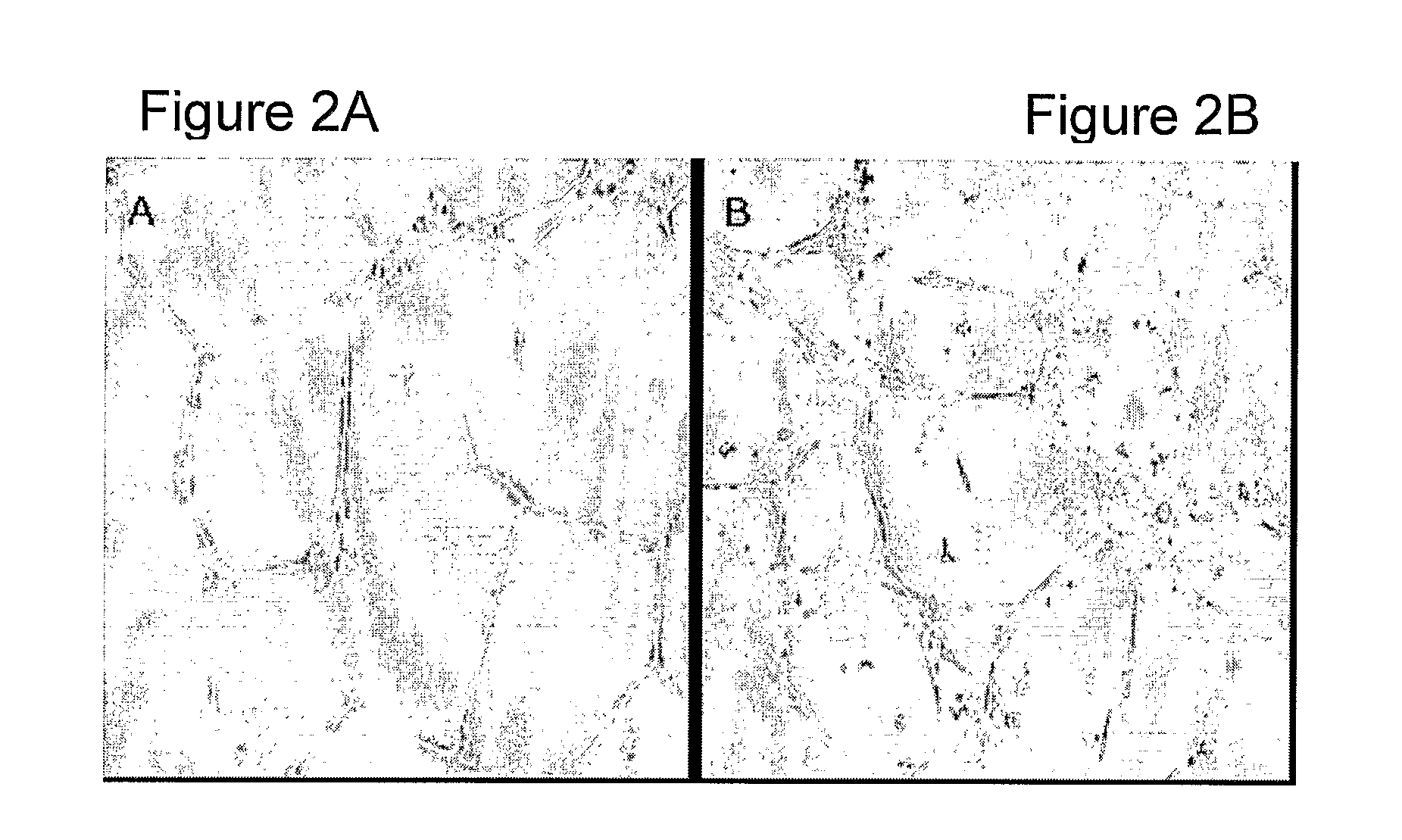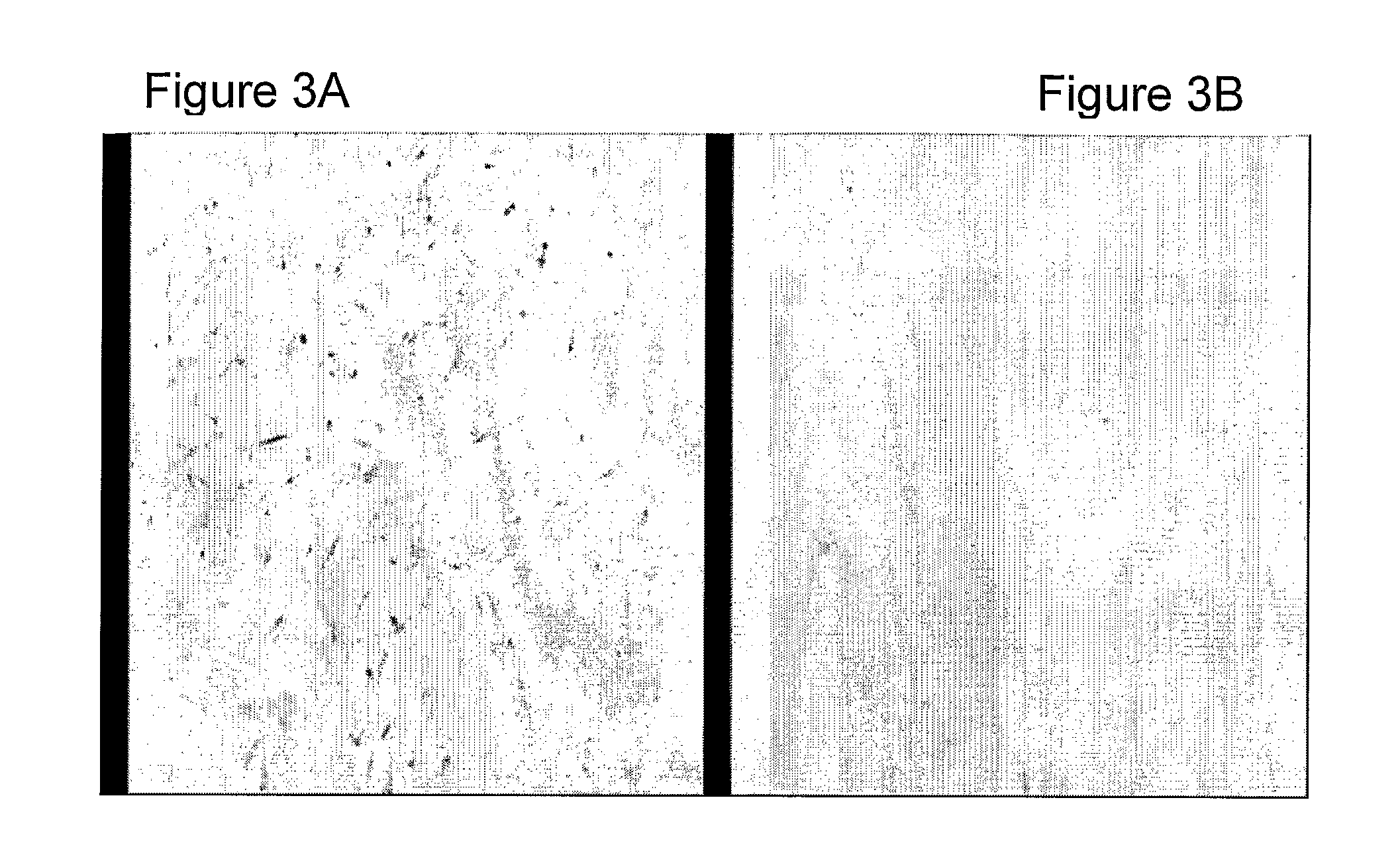Methods for bone regeneration using endothelial progenitor cell preparations
a technology of endothelial progenitor cells and bone regeneration, which is applied in the field of bone regeneration using endothelial progenitor cell preparations, can solve the problems of limited body sites, delayed union or non-union at the fracture site, and too large defects for the body's natural healing respons
- Summary
- Abstract
- Description
- Claims
- Application Information
AI Technical Summary
Benefits of technology
Problems solved by technology
Method used
Image
Examples
example 1
Ex-Vivo Expansion and Characterization of EPC
Isolation and Culture of EPC from Bone Marrow Derived and Peripheral Blood Derived Mononuclear Cells (MNC)
[0105]EPC were prepared from sheep mononuclear cells (MNC). Mononuclear cells (MNC) were separated from the bone-marrow of a removed tibia segment (3.2 cm) or from samples of 10 to 40 ml of peripheral venous blood taken from the jugular vein, using Uni-SepMAXI® U-16 Ficoll™ (Novamed, Jerusalem, Israel) by density gradient centrifugation at 400×g for 30 min at room temperature (RT). The MNC fraction was collected, washed twice, by centrifugation at 200×g for 15 min, with 45 ml Dulbecco's phosphate-buffered saline (DPBS, without calcium and magnesium; Biological Industries Ltd., Beit Haemek, Israel) containing 3% fetal calf serum (FCS; Biological Industries Ltd., Beit Haemek, Israel), and plated on fibronectin-coated six-well plates (Sigma Chemical Co., St. Louis, Mo.). Cells were cultured in endothelial basal medium-2 (EBM-2; Clonetics...
example 2
A Critical Gap Model in Sheep Tibiae
[0111]A critical bone gap model was generated by removing a 3.2 cm bone segment from sheep tibia (FIG. 5). Anesthesia was performed in 13 sheep (aged about 2 years, 40-70 Kilograms) by 0.4 xylasin and 600 mg ketamin, induced by 200 mg propapol and maintained by an intubation of 2% isofloran and oxygen ventilation. One gm cephazoline was given during surgery and then amoxilin 6 ml twice a day for the next 10 days. A longitudinal incision was performed along the skin of the anterior aspect of the right lower leg. The periosteum was similarly cut and elevated. Following the adjustment of a metal plate by 8 screws to the posterior aspect of the tibia, a segment of 3.2 cm was removed from the mid-diaphysis. This segment was preserved on ice for future isolation and culture of autologous EPC (as described above). Periosteum, fascia and skin were replaced and closed by sutures and pins and sprayed with antibiotics. A plaster cast was placed over the tibi...
example 3
Implantation of EPC or Paste into a Critical Bone Gap
[0112]Preparation of Amorphous Calcium Phosphate Paste
[0113]1.3 gr of Hydroxyapatite (ProChon Biotech) was dissolved in 10 ml of phosphate buffered saline (PBS). Following filtration, 2.5 gr of Hyaluronic acid (MW 3×106 in 1% concentration, ProChon Biotech) were added.
[0114]Amorphous Calcium Phosphate Paste Containing FGF
[0115]1.3 gr of Hydroxyapatite (ProChon Biotech) was dissolved in 10 ml of phosphate buffered saline (PBS). 25 μgr / ml FGF2(3,5Q)-N111G (an FGF2 variant disclosed in WO 03 / 094835 assigned in part to the assignee of the present invention) was precipitated on the Hydroxyapatite for 1 hr at 37° C. Following filtration, 2.5 gr of Hyaluronic acid (MW 3×106 in 1% concentration, ProChon Biotech) were added.
[0116]Two weeks after the removal of the bone segment, the sheep underwent a second operation using the same procedures. A nicely enveloped healing tissue was observed filling the whole segmental gap. A longitudinal wed...
PUM
| Property | Measurement | Unit |
|---|---|---|
| concentrations | aaaaa | aaaaa |
| area | aaaaa | aaaaa |
| conductive | aaaaa | aaaaa |
Abstract
Description
Claims
Application Information
 Login to View More
Login to View More - R&D
- Intellectual Property
- Life Sciences
- Materials
- Tech Scout
- Unparalleled Data Quality
- Higher Quality Content
- 60% Fewer Hallucinations
Browse by: Latest US Patents, China's latest patents, Technical Efficacy Thesaurus, Application Domain, Technology Topic, Popular Technical Reports.
© 2025 PatSnap. All rights reserved.Legal|Privacy policy|Modern Slavery Act Transparency Statement|Sitemap|About US| Contact US: help@patsnap.com



